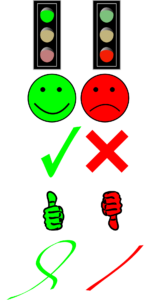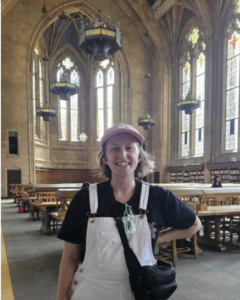Have you ever tried to “correct” a toddler’s grammar? It probably went in one ear and out the other. There’s a very famous example from a linguistics researcher:
Child: Want other one spoon, Daddy.
Father: You mean, you want the other spoon.
Child: Yes, I want other one spoon, please Daddy.
Father: Can you say “the other spoon”?
Child: Other.
Father: Say “other”.
Child: Other.
Father: “Spoon”.
Child: Spoon.
Father: “Other spoon”.
Child: Other . . . . spoon. Now give me other one spoon?
(Braine, 1971)
Language scientists use this example to make the point that kids don’t learn to talk simply by imitating what adults say. If that were the case, in this example, getting the sentence “right” would be super easy, with the father telling the child exactly what they should say. But the kid doesn’t do that. It’s almost certainly not a direct repetition since they would have never heard an adult say “other one spoon.”
This also shows us that kids don’t really learn language from negative evidence. In other words, they don’t learn what’s NOT a possible way to say things in their language– there are too many possibilities to have to rule them out in a process of elimination.
Over the first ~5 years of their lives, children learn the languages spoken around them, and they learn them implicitly. That means they learn just by observing, not by taking classes and having someone teach them how to say things and how not to say things. Times when parents correct their childrens’ language are very, very rare, and even when they do, the kids tend not to take their point. Kids also learn a lot about language before they are saying anything themselves, so much of their learning happens before grown ups would have a chance to correct them.
Generally, all babies really have to go on is a bunch of adults talking to them and around them. They get a lot of positive evidence: what language CAN look like. It’s not even complete positive evidence, though: for each language there are hundreds of millions of sentences you could say, which they definitely don’t have the time to hear before they start learning. Babies have to learn to be able to combine words to say new things, based on a relatively small sample of sentences they CAN say in their language or languages.

This leaves linguists with a big mystery: how do kids learn a whole language (or multiple!) based only on a relatively small sample of what people *CAN* say, and still come out with pretty strong ideas of what a speaker of their language *can’t* say?
I’ll make it more concrete. Which of the following sentences is possible to say and understand a meaning from, and which one just makes no sense?
What did you eat that was in the bag? Answer: the sandwich
What did you eat the sandwich that was in? Intended answer: the bag (HUH????)
Pretty much all English speakers think that the second sentence is no good. How did we learn that, even though we know all those words, and we can reasonably ask questions about either the sandwich or the bag?
The conclusion that some linguists come to is that babies are born with a strong set of expectations about how languages can possibly be structured, and their job is to break down the patterns of the language they’re exposed to according to a general set of rules. Essentially, they don’t need negative evidence because they never consider impossible structures or meanings. Their job gets much easier: all they have to do is figure out how the rules are applied in the language they’re learning, which they can do by tracking the statistics of different sounds and patterns of words.
The harder question is how we can tell if kids really have preconceived expectations about language when they are born, and if so, what exactly are they expecting? That’s one of many reasons we study children’s language development at all ages!

Lilliannna Righter
Author
Lilli is the Bergelson Lab manager and blog editor. She is interested in what types of information are important to babies learning language as they grow up!